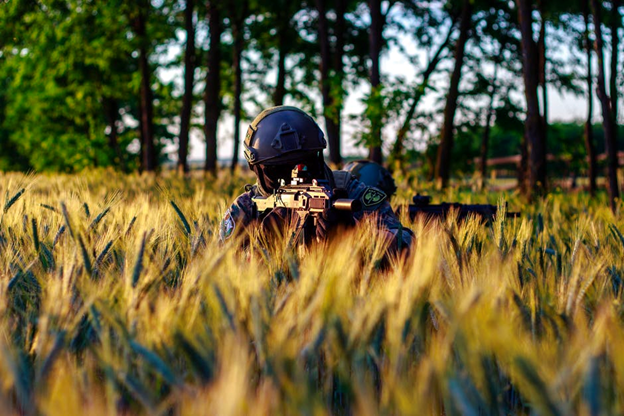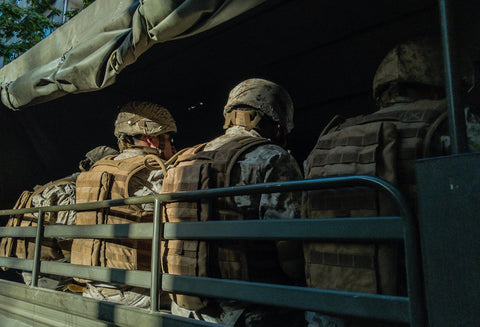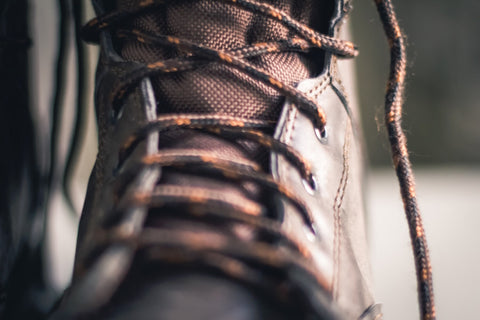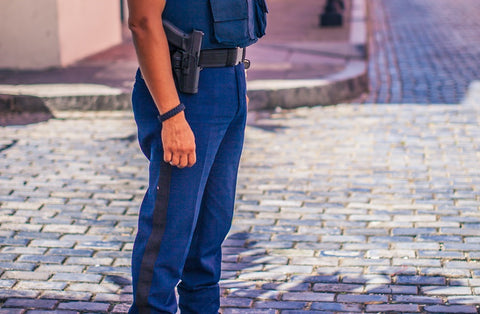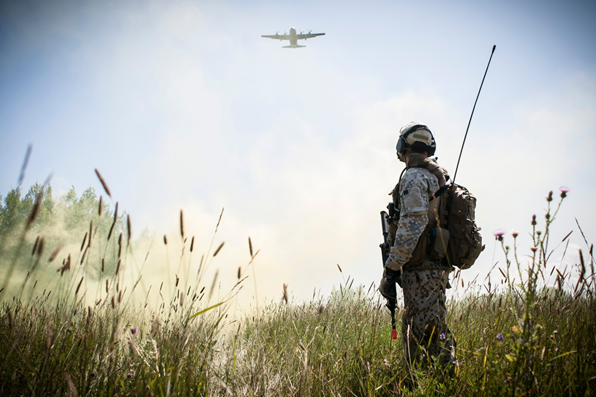How to Choose a Gun Holster

A Buyer’s Guide for Gun Holsters
Choosing your gun is an incredibly important decision that requires a lot of thought and consideration. So much so that it’s common to forget about the holster that will hold it.
But gun holsters are just as important for both your protection and your gun’s since they not only protect your weapon, but affect how easily you can draw it.
So, to help you find the best holster for your gun, here’s a guide to choosing gun holsters, along with all the factors that you’ll need to take into consideration.
The Importance of Having A Proper Gun Holster
The right holster will suit you, your gun, and your style of carry, so you can have quick access to your weapon when you need it. If you choose the wrong holster, you could encounter a number of hazardous problems such as discomfort, longer reaction times, or the risk of losing your weapon.
How To Find The Right Gun Holster
The most important things to consider when choosing a gun holster are your carrying type (open or concealed), preferred materials, gun type, and retention type. Retention will affect your ease of drawing your gun while also ensuring it is safe from someone else grabbing it.
Here are some additional factors to take into consideration.
Consider Materials
The following are the most popular types of materials used for gun holsters:
Leather
Leather is the traditional material used for holsters since it is durable, versatile, and attractive. It is also ideal for concealed carry since it is flexible and moulds well to the body. Leather holsters vary in design, from traditional to moulded, stiffened holsters that fit a specific gun model.
Leather holsters are quiet when drawing guns. However, due to friction, it will take a fraction of a second longer to draw from a leather holster compared to a Kydex holster.
Leather does require regular maintenance to wick away moisture and keep it from degrading. You can also sweat through a leather holster. And it will soften and crease with age, which can be hazardous. So, it will need replacement with time.
Nylon
Nylon holsters are quiet, comfortable, durable, waterproof, low-cost, and easily customizable for the way you carry. These holsters are equipped with a shape-retaining stiffener and hook-and-loop fasteners. And they are often used for OWB and shoulder holsters.
However, nylon holsters may not last as long as other materials, and OWB and IWB configuration options can be tricky.
Synthetic
Synthetic holsters are sturdy, waterproof, and low-maintenance. They are scratch- and impact-resistant, and they won’t lose their shape over time. They also have a slightly more secure fit than leather, along with a faster draw and trigger guard protection.
Blend
Polymer blend materials, like Kydex, are durable, low-maintenance, lightweight, and less expensive than leather. These materials can be moulded to precise specs and won’t lose their shape, even after years of use.
The only drawbacks to polymer blend holsters are that they are noisier than drawing from nylon or leather. And Kydex can wear against the finish of your gun.
What Is Your Intended Usage?
How you plan to carry and use your gun will determine the best types of holsters to have.
Duty – Military vs. Police
Belt holsters are the traditional go-to holsters for military and police tactical duty. Web gear or an equipment belt provides support for a holster while keeping all of your equipment together in one place.
Police belt holsters usually have an open top and some type of retention device, which allows for a quick draw while preventing others from grabbing the weapon.
Military belt holsters typically have a full-flap design to cover as much of the gun as possible, protecting it from cold, wet, muddy, dirty, and dusty conditions.
Drop leg holsters hang from your belt at around mid-thigh and strap around the thigh to stay in place. These holsters are ideal for drawing while sitting or while wearing long body armour that could otherwise interfere with a belt holster. But they tend to bounce while running and drag while crawling.
Shoulder holsters are easy to draw when sitting or driving. But they don’t work well with a full combat load, so they are best used for police or troops who operate with lighter gear.
Chest holders work better with armour. These holders usually attach to the PALS grid on MOLLE-compatible armour, with the gun’s butt positioned over your sternum for an easy draw, especially for drivers and vehicle crewmen.
Concealment
Inside the waistband (IWB) holsters hold the gun inside the waistband of your pants, with only the butt and rear exposed above the waistband. An IWB holster secures to your belt with a loop or clip and works best with flat, compact semiautomatics.
Outside the waistband (OWB) or belt holsters can be designed for both concealed carry and open carry. These holsters are better for revolvers and larger semiautomatics. An OWB holster usually has wide wings to secure the holster on the belt and smooth out the shape to reduce “printing” under your shirt or coat.
Shoulder holsters for both open carry and concealed carry allow for a fast draw. Shoulder holsters are ideal for those who spend a lot of time sitting or driving, since using waistband holsters can be uncomfortable in these situations.
They are also the most ideal for carrying big revolvers. And the holster can be horizontal for compact handguns, or vertical for long-barreled pistols. Shoulder holsters can also be easily concealed under an open jacket.
Pocket holsters allow you to carry a gun in your pocket and draw cleanly without it snagging on your clothing or pocket contents. Instead of attaching to the inside of a pocket, pocket holsters are held in place with friction, so the rough side of the leather is on the outside of the holster. This makes it easier to move your holster to different coats.
Ankle holsters are used for subcompact semiautomatics or short-barreled revolvers. While ankle holsters are excellent for concealing backup guns, they don’t allow for the quickest draw since you have to pull up your pants leg to access the weapon. They are also not very comfortable if you do a lot of physical activity—such as running.
Belly band holsters are wide elasticated belts with an integrated holster. A belly band holster is designed to hide a handgun under an untucked shirt. These holsters come in different designs based on where you want to hold your gun. Gun placement can be from just above the belt to high up on the chest, and at the front of the body or under the armpit. These holsters are not the most comfortable to wear for long periods since they must be tight against the body to hold the gun firmly in place.
Consider Retention
Holsters come with different types of retention that keep a gun in place until you are ready to draw. These types of retention include:
- Friction: Most concealed carry holsters rely on friction to hold the gun in place, since there is less risk of someone trying to grab a concealed weapon, and you likely won’t be running around often with one. These holsters often come with a retention screw to adjust the amount of friction and secure the gun in place.
- Flaps: Flap holsters rely on friction, retention screws, as well as flaps to hold the gun in place and protect it from the elements.
- Straps:Thumb break straps are preferred over flaps if you don’t need to protect your gun from the elements regularly. These straps are fitted to most police and open carry holsters for quick release. Though they prevent guns from falling out of holsters, they won’t stop someone else from grabbing the gun. Thumb loops that go over the hammer are similar to straps but without a fastener.
- Trigger Guard Locks:These locks have a hook or post that locks into the gun’s trigger guard. To unlock, you need to use a button or other device on the outside of the holster. These locks are found on many rigid holsters, especially for police, since they make it difficult for someone to grab the weapon.
Don’t let your holster be an afterthought. Make sure your gun is well protected while being easy to handle with the right holster for you, your gun, and your line of work.
With so many holster types to choose from, it’s important to take your time and consider your needs when finding the right holster.



